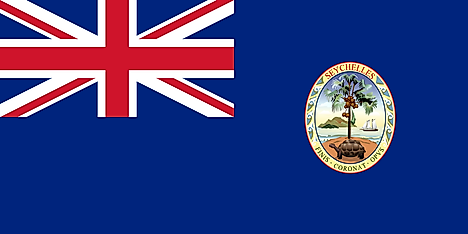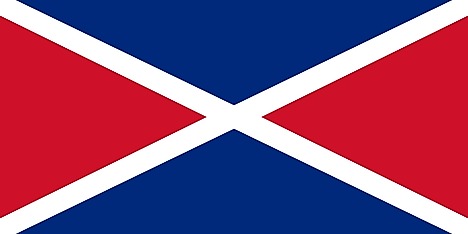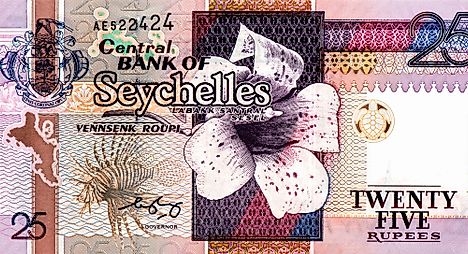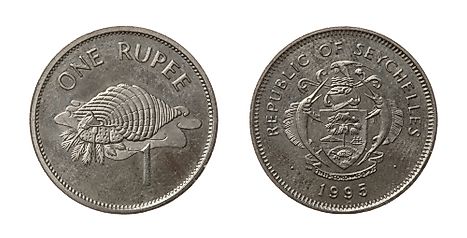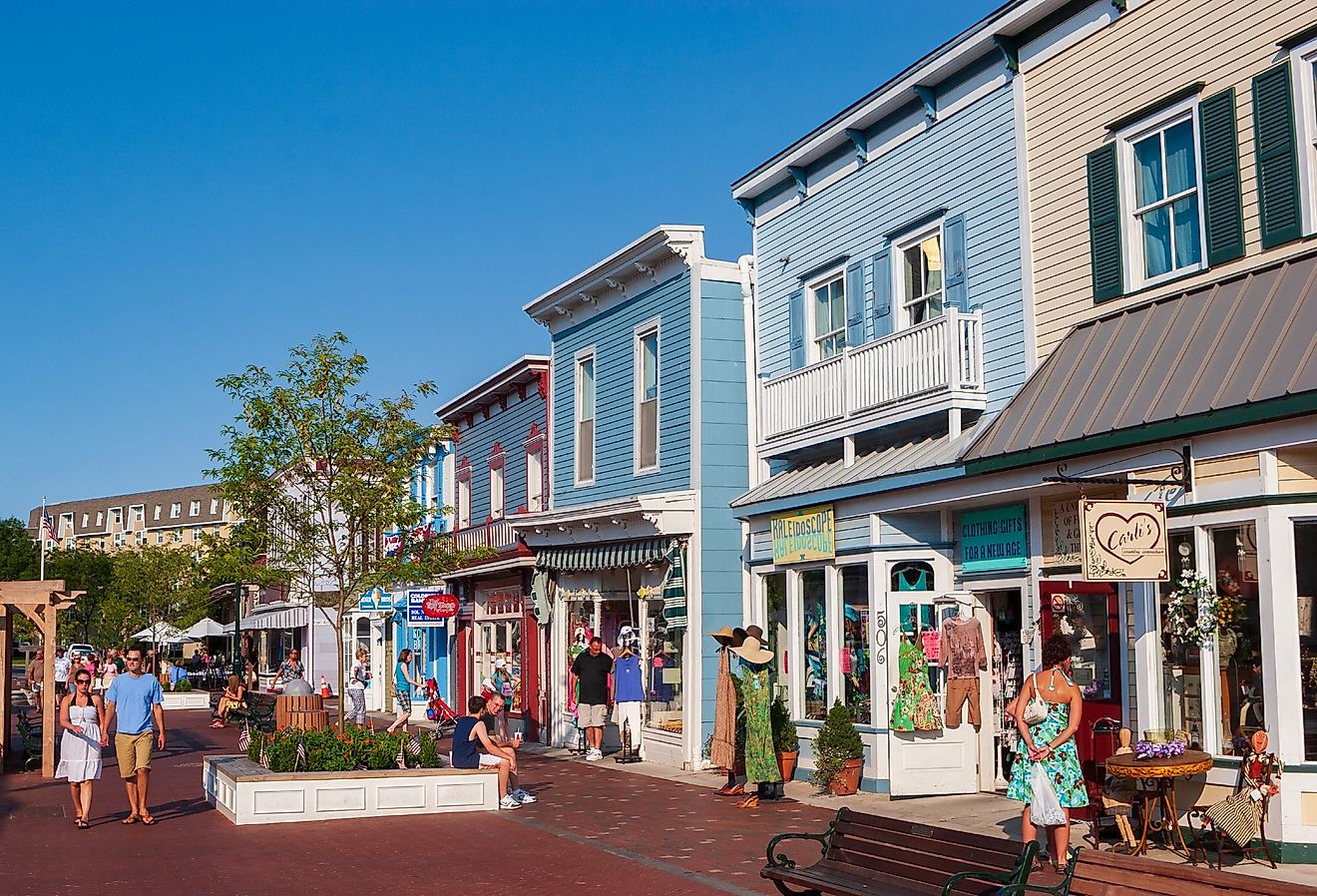Flags, Symbols & Currency of Seychelles
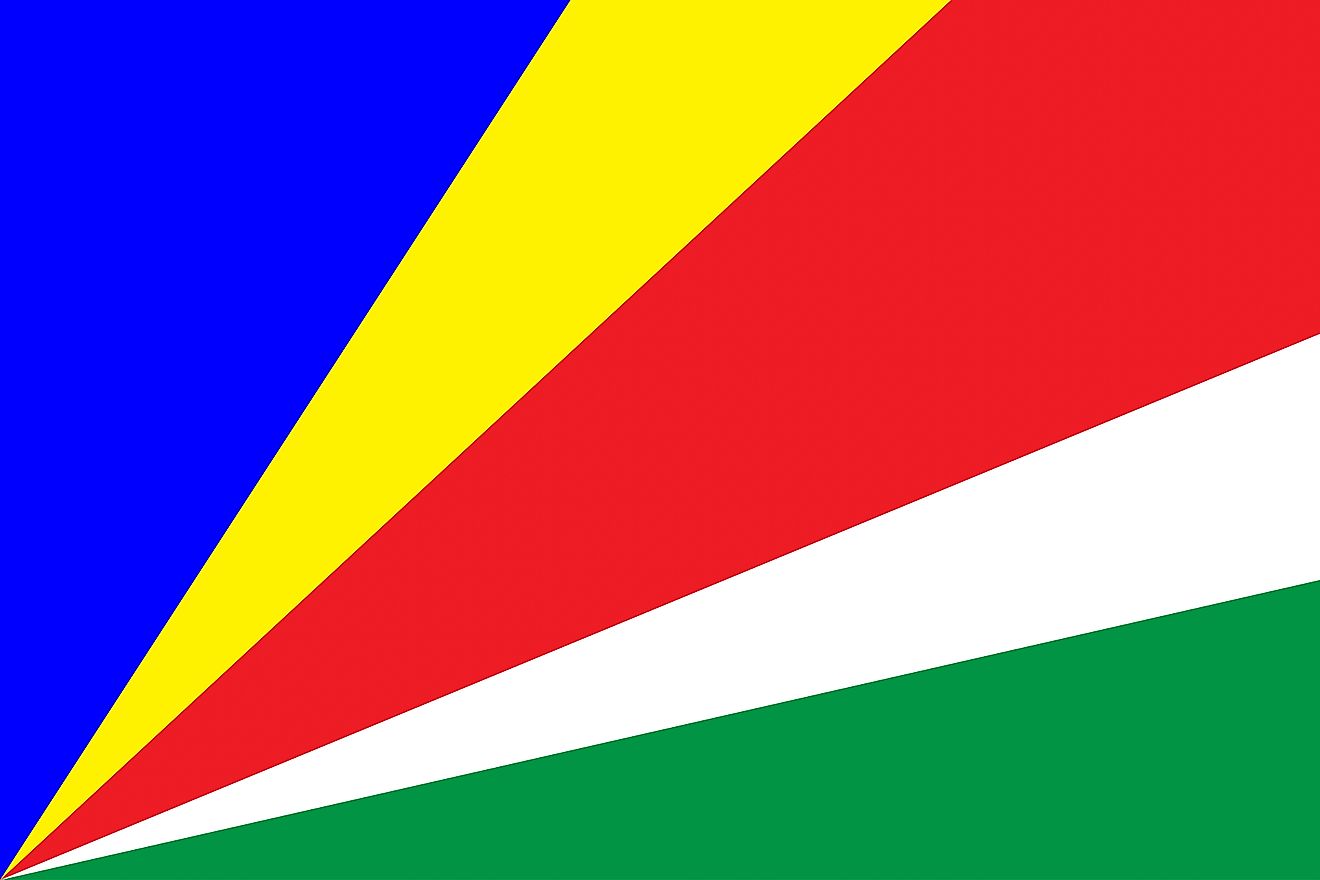
The National Flag of Seychelles was officially adopted on January 8, 1996.
The National Flag of Seychelles features five oblique bands of blue (hoist side), yellow, red, white, and green (bottom) radiating from the lower corner of the flag towards the hoist side and then diverge as the move towards the other end. The oblique bands represent the dynamism with which the country is moving into the future. The blue color symbolizes the sea and the sky surrounding the islands of Seychelles. The yellow color represents the sun and its power to sustain life on Earth. The red color is for the determination and courage of the people of Seychelles who work in unity to ensure a bright future for the country. The white is a symbol of harmony and social justice. The green color of the national flag represents the natural environment and land of Seychelles. The red, white and green are the official colors of the SPUP (Seychelles People’s United Party) while the blue and yellow are colors of the country's democratic party (Seychelles Democratic Party). The flag has a width-to-length ratio of 1:2.
History of the Flag of Seychelles
The islands of Seychelles were uninhabited for a long period of time. The first landing here was recorded in January 1609 as part of a voyage of the British East India Company. The islands were under the control of pirates for a long time. However, they were driven out in 1756 by the French who started to take control of the islands. Later, the British also started exerting their influence on the islands. In 1903, Seychelles became a crown colony of the British. The country attained independence from foreign rule in 1976.
Right after independence, on June 29, 1976, the original flag of Seychelles was adopted. By coincidence, the flag featured blue and red triangles alternately and was nearly identical to that used by an Australian United Steam Navigation Company. A year later, this flag was abolished and the flag used by the Seychelles People's United Party (SPUP) was instead used as the national flag of Seychelles. However, when the party lost a majority in the elections, there was widespread protest regarding the use of the party’s flag as the national flag. Thus, there was the need for a new design for the national flag of Seychelles. The newly designed flag featured the colors used by the two biggest political parties of the country. The new flag was adopted on January 8, 1996.
Symbols of Seychelles
The National Coat of Arms of Seychelles
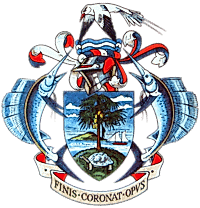
The National Coat of Arms of Seychelles consists of a shield supported by two Indo-Pacific sailfish. Within the shield, there is an Aldabra giant tortoise located on green grounds. On the ground there is a Seychelles palm tree. Behind the tree there lies a blue sea - representing the Indian Ocean, which also features two islands and a schooner. Placed above the shield is a silver helmet, on which a Tropicbird hovers over blue and white waves. The national motto "Finis Coronat Opus" ("The End Crowns the Work") is displayed on a ribbon below.
National Motto
"Finis Coronat Opus" ("The End Crowns the Work")
National Anthem
- Anthem Title: "Koste Seselwa" ("Join together all Seychellois")
- Music Composer: David François Marc André and George Charles Robert Payet
- Lyricist: David François Marc André and George Charles Robert Payet
- Date of Adoption: June 18,1996
"Koste Seselwa" (Join together all Seychellois) is the national anthem of Seychelles. The music of the anthem and its lyrics have been created by David François Marc André and George Charles Robert Payet. The national anthem was officially adopted on June 18, 1996.
"Koste Seselwa" (Seychellois Creole)
Sesel ou menm nou sel patri.
Kot nou viv dan larmoni.
Lazwa, lanmour ek lape.
Nou remersye Bondye.
Preserv labote nou pei.
Larises nou losean.
En leritaz byen presye.
Pour boner nou zanfan.
Reste touzour dan linite.
Fer monte nou paviyon.
Ansanm pou tou leternite.
Koste Seselwa!
"Join together all Seychellois"
Seychelles, our only motherland.
Where we live in harmony.
Happiness, love and peace.
We give thanks to God.
Preserve the beauty of our country
The riches of our oceans
A precious heritage
For the happiness of our children.
Live forever in unity
Raise our flag
Together for all eternity
Join together all Seychellois.
The Currency of Seychelles is the Seychellois rupee
The current official currency of Seychelles is the Seychellois rupee (SRe, SR, SCR). It is more commonly known as the roupi. One rupee is made up of 100 subunits known as cents. The Central Bank of Seychelles is responsible for issuing currency in the nation.
Coins
Currently, coins in denominations of 1, 5, 10, 25 cents and 1, 5, 10 rupees are in circulation.
Banknotes
Currently, notes in denominations of 25, 50, 100, 500 rupees are in circulation.
Banknotes issued as of 2011 with values of 500, 100 and 50 rupees feature a holographic patch and not the foil sailfish that appeared on previously issued notes. The holographic sailfish is silver on 50-rupee bills and gold on 100- and 500-rupee banknotes. These bills also feature fluorescent security threads and are protected by the outstanding Gemini technology of De La Rue. The newest series of banknotes introduced in the country in 2016 are centred on the theme of the nation’s distinct biodiversity.
Historical currencies of Seychelles
Use of the rupee in Seychelles started during its colonial period. The country’s colonial Governor Charles O’Brien enacted a Paper Currency Ordinance in 1914, which sought to establish mechanisms for issuing of currency in the country. Emergency issues of bills in values of 10, 5 and 1 rupee, as well as 50 cents, were produced by the government that year. In 1918, the government started producing standard issues of notes. The first standard issue bills were in denominations of 1 rupee and 50 cents. In 1928, bill with values of 50, 10 and 5 rupees were issued. In 1951, coins with a value of 50 cents and 1 rupee replaced bills of the same value and 1968 saw the introduction of notes worth 100 and 20 rupees. 1n 1972, coins with a value of 5 rupee replaced bills of the same value.
The first series of banknotes in independent Seychelles were issued by its Monetary Authority in 1976. The bills were produced in denominations of 100, 50, 25 and 10 rupees. They replaced banknotes issued by the previous colonial government and they featured James Mancham, the Nation’s first President. The design of the series was changed in 1979 and in the same year the country’s central bank took over issuance of the currency. Notes of rupee were introduced in Seychelles in 2005.

